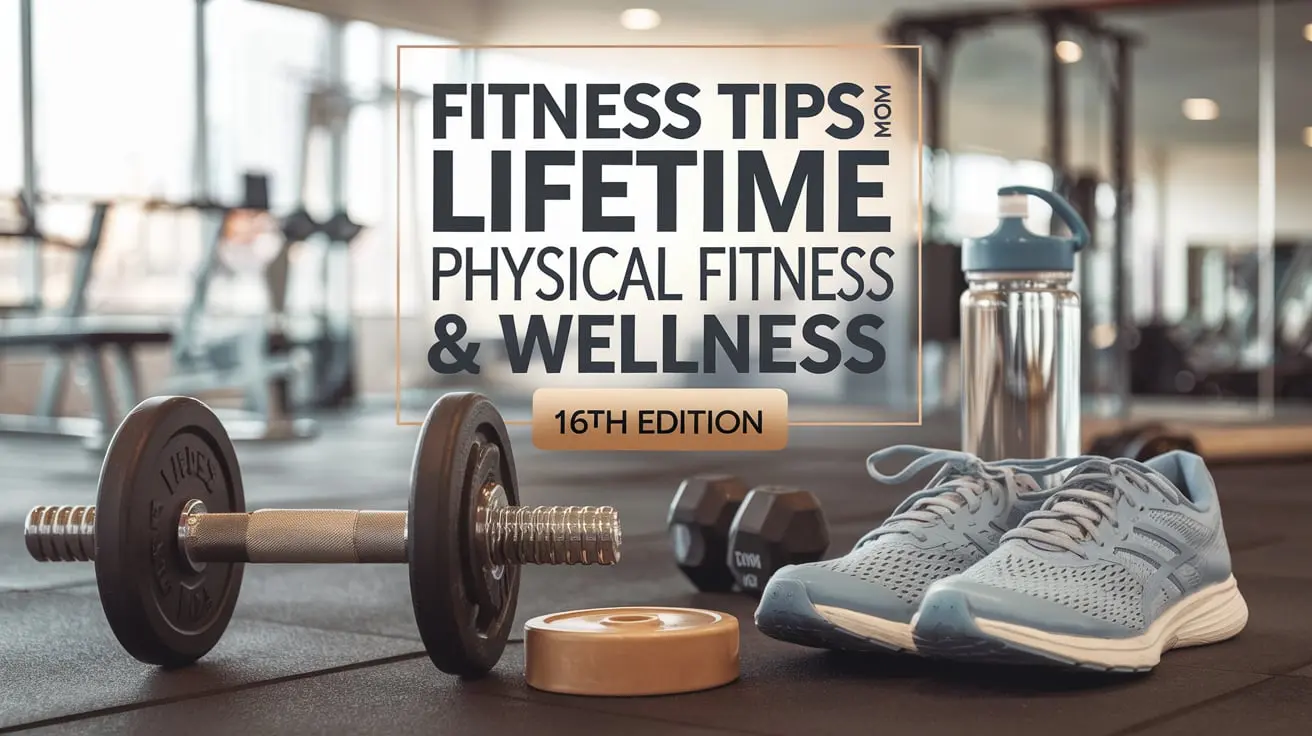
Fitness Tips from Lifetime Physical Fitness & Wellness 16th Edition
Physical fitness and wellness are fundamental to a long, healthy life. The Lifetime Physical Fitness and Wellness 16th Edition provides a comprehensive guide to maintaining optimal health through exercise, nutrition, and stress management. This article distills the most valuable fitness tips from the book, helping you develop healthy habits and sustain an active lifestyle.
1. Understanding Physical Fitness
Physical fitness is the body’s ability to function efficiently in everyday tasks without undue fatigue. The book emphasizes the five components of physical fitness:
- Cardiorespiratory Endurance: The heart and lungs’ ability to supply oxygen during sustained physical activity.
- Muscular Strength: The maximum force muscles can exert in a single effort.
- Muscular Endurance: The muscles’ ability to perform repeated contractions over time without tiring.
- Flexibility: The range of motion in a joint or group of joints.
- Body Composition: The ratio of body fat to lean body mass, including muscle, bones, and organs.
These components form the foundation of a balanced fitness regimen. Improving each area leads to better overall health, higher energy levels, and reduced risk of chronic disease.
2. Set Clear Fitness Goals
One key takeaway from the book is the importance of setting specific, measurable, attainable, realistic, and time-bound (SMART) goals. Whether you want to improve cardiovascular health, build muscle, or lose weight, defining clear goals gives direction and motivation.
Start by identifying your main objective. Are you looking to increase endurance, lose fat, or build strength? Once you know your goal, break it down into smaller, manageable steps. Regularly track progress and adjust as necessary.
3. Follow a Well-Rounded Exercise Routine
A balanced workout plan incorporates all major components of fitness: cardio, strength training, and flexibility. The Lifetime Physical Fitness and Wellness 16th Edition recommends including:
- Cardiovascular Exercise: Activities like running, cycling, and swimming improve heart health and burn calories. Aim for at least 150 minutes of moderate-intensity cardio or 75 minutes of vigorous activity per week.
- Strength Training: Lifting weights or using resistance bands builds muscle and boosts metabolism. The book suggests strength training at least two days a week, targeting all major muscle groups.
- Flexibility Exercises: Stretching and yoga increase flexibility, reduce the risk of injury, and improve posture. Incorporate flexibility exercises after each workout to enhance recovery and maintain joint health.
By combining these elements, you’ll create a balanced, effective fitness plan that targets all areas of physical health.
4. Incorporate Functional Training
Functional training focuses on exercises that mimic real-life movements, improving strength, coordination, and balance. It enhances daily activities such as lifting, bending, and climbing stairs. The book highlights the importance of functional movements like squats, lunges, push-ups, and planks. These exercises strengthen muscles used in everyday tasks and improve overall mobility and stability.
By incorporating functional training into your fitness routine, you’ll become more efficient in daily movements and lower the risk of injury.
5. Progressive Overload for Continued Gains
To improve fitness, you need to gradually increase the intensity, duration, or frequency of your workouts—this is called progressive overload. The Lifetime Physical Fitness and Wellness 16th Edition emphasizes that without progressively challenging your body, your fitness level will plateau.
Here’s how to apply progressive overload:
- Increase Resistance: Gradually lift heavier weights or add more resistance during strength training.
- Extend Duration: Increase the length of your cardio sessions.
- Boost Frequency: Add more workout days per week.
- Vary Exercises: Introduce new movements to target different muscle groups and prevent boredom.
Start slow and make incremental changes. Consistency is key, and small improvements over time lead to significant gains in strength, endurance, and flexibility.
6. Prioritize Recovery
Rest and recovery are essential for physical progress. The body repairs and strengthens itself between workouts. Without proper recovery, you increase the risk of injury and burnout. The Lifetime Physical Fitness and Wellness 16th Edition advises incorporating rest days and active recovery, like light stretching or walking, to allow muscles to heal.
In addition to rest, getting enough sleep, staying hydrated, and eating nutrient-dense foods are crucial for recovery. Aim for 7-9 hours of sleep per night to support muscle repair and cognitive function.
7. Nutrition’s Role in Fitness
Proper nutrition fuels workouts and aids recovery. The book stresses the importance of a balanced diet rich in whole grains, lean proteins, healthy fats, and a variety of fruits and vegetables. These nutrients provide energy and aid in muscle repair, supporting overall fitness goals.
Key Nutritional Tips:
- Protein: Essential for muscle repair and growth. Include sources like chicken, fish, eggs, beans, and tofu in your diet.
- Carbohydrates: Provide energy for workouts. Opt for complex carbs like brown rice, oats, and quinoa for sustained energy.
- Fats: Necessary for hormone production and brain health. Include healthy fats from avocados, nuts, seeds, and olive oil.
- Hydration: Water is vital for optimal performance. Aim to drink at least 8 cups of water per day and more during exercise to stay hydrated.
Planning meals around your workouts can maximize performance and recovery. Eat a balanced meal 1-2 hours before exercising and a protein-rich snack post-workout to aid muscle recovery.
8. Monitor Your Body Composition
Instead of focusing solely on weight, the book recommends tracking body composition—the ratio of fat to lean mass. Body composition offers a better understanding of overall health and fitness than weight alone. Regular assessments help you measure progress and adjust your fitness plan as needed.
To improve body composition, prioritize strength training and maintain a healthy diet. Building muscle increases metabolism and burns fat, leading to a leaner, more toned physique.
9. Stay Consistent and Motivated
Consistency is crucial to achieving lasting fitness results. The Lifetime Physical Fitness and Wellness 16th Edition highlights the importance of maintaining regular workouts and healthy habits over time. Set a realistic schedule that fits into your lifestyle and commit to it.
Tips for Staying Motivated:
- Set Small Milestones: Celebrate incremental progress, whether it’s running a little longer or lifting heavier weights.
- Vary Your Workouts: Change your routine to keep it interesting and challenging.
- Work Out with a Friend: A workout partner can provide support and accountability.
- Track Your Progress: Keep a fitness journal or use an app to record workouts, progress, and how you feel.
By staying consistent and motivated, you’ll see long-term improvements in your physical fitness and overall health.
10. Mind-Body Connection
Fitness isn’t just physical—mental health plays a significant role in achieving fitness goals. The Lifetime Physical Fitness and Wellness 16th Edition emphasizes the mind-body connection, noting that mental well-being enhances physical performance.
Incorporating mindfulness practices such as meditation, yoga, or deep breathing can reduce stress and improve focus. When your mind is calm and centered, you perform better in workouts and recover more effectively. Staying positive and maintaining mental resilience will help you stay committed to your fitness journey.
11. Maintain Flexibility as You Age
As you age, flexibility becomes increasingly important for maintaining mobility and preventing injury. The book stresses the need to focus on flexibility exercises to stay limber and agile. Regular stretching improves range of motion, enhances performance in other activities, and reduces stiffness.
Incorporate dynamic stretches before workouts and static stretches afterward. Yoga and Pilates are also excellent ways to build flexibility and strength simultaneously.
12. Stress Management for Better Fitness
Chronic stress negatively impacts physical fitness by increasing fatigue, reducing motivation, and hindering recovery. The Lifetime Physical Fitness and Wellness 16th Edition advises practicing stress management techniques like deep breathing, meditation, and regular physical activity to manage stress.
By reducing stress, you’ll improve your focus, sleep better, and feel more energized for your workouts. Effective stress management boosts both physical and mental well-being.
13. Maintain Wellness Beyond Fitness
Fitness is just one aspect of overall wellness. The book advocates for a holistic approach, including mental health, social connections, and emotional balance. To achieve lasting wellness, focus on building healthy relationships, pursuing hobbies, and finding work-life balance.
Fitness and wellness are intertwined. By nurturing all areas of your life, you’ll experience greater happiness, energy, and overall well-being.
14. Keep Fitness Fun
The Lifetime Physical Fitness and Wellness 16th Edition reminds readers to keep fitness enjoyable. Engaging in activities you love, such as dancing, hiking, or swimming, makes exercise feel less like a chore and more like an enjoyable part of your routine. Find a fitness routine that excites you, and you’ll be more likely to stick with it.
Conclusion
The Lifetime Physical Fitness and Wellness 16th Edition offers a wealth of fitness tips that can improve your physical and mental well-being. From setting clear goals to practicing progressive overload and stress management, the book provides actionable advice for building a healthier lifestyle. By incorporating these fitness strategies into your daily routine, you’ll achieve lasting results and enjoy a higher quality of life.



